Subaru Crosstrek Vs Forester Vs Outback: Which Wilderness to Choose?

Subaru has launched a new sub-brand of vehicles called Wilderness. This designation is reserved for more off-road capable members of the brand’s vehicle portfolio. First there was the Outback Wilderness, followed by the Forester Wilderness, and most recently, a third member joined the family, the Crosstrek Wilderness.
With a trio of capable, yet different options, we wondered what is the best Subaru Wilderness option? The answer differs depending on priorities, so to help, we have laid out the similarities and differences between Subaru’s off-road ready family in five key areas.
Off-Road Capability
Crosstrek: The Crosstrek is the smallest SUV in the Subaru lineup. Measuring 176.4-inches (4,480 mm) length, it’s able to squeeze into places the other two cannot. It offers 9.3-inches (235 mm) of ground clearance which helps to produce a 20.0-degrees of approach angle, 33.0-degrees of departure angle, and ramp breakover angle of 21.1-degrees.
Like all Wilderness models, it has all-terrain tires for added grip in the rough stuff. On the Crosstrek, the tires measure 225/60R17 in size. Another constant on all Wilderness models is Subaru’s dual-mode X-Mode.
Forester: The Forester is larger than the Crosstrek and much boxier in shape. At a length of 182.7-inches (4,640 mm), it features slightly less ground clearance at 9.2-inches, although Canadian specifications list it at the same 235 mm as the Crosstrek.
While on the topic of similarities, the Forester wears the same 225/60R17 all-terrain tires for added capabilities. With its unique front bumper, the Forester has a much better approach angle at 23.5-degrees but trails the Crosstrek in departure angle with 25.4-degrees, and ramp breakover angle at 21.0-degrees.
Outback: At 191.3-inches (4,860 mm) in length, the Outback is the largest member of the Wilderness family. It also offers the largest ground clearance at 9.5 inches (241 mm). But due to its length, the Outback can’t match the other two in terms of agility, approach angle (20.0-degrees), angle of departure (23.6-degrees), or ramp breakover angle (21.2 degrees).
Still, if it’s a rocky, rutted road that needs to be conquered, with the extra ground clearance and slightly larger 225/65R17 all-terrain tires, the Outback could be the best choice.
Drivetrain
Crosstrek: The Crosstrek is powered by Subaru’s venerable 2.5-liter four-cylinder engine making 182 horsepower (hp) and 178 pound feet (lb-ft) of torque. Like all Wilderness models, it’s paired exclusively to a continuously variable transmission (CVT), that features an oil cooler, and drives all four-wheels.
As the lightest offering weighing just 3369 lbs (1,550 kg), the Crosstrek returns the best fuel economy ratings with 25 mpg (9.4 L/100 km) city and 29 mpg (8.1 L/100 km) on the highway. Despite the vehicle’s small size, it can deliver impressive towing figures, rated at 3,500 lbs. (1,588 kg) when properly equipped.
Forester: The Forster uses the same 2.5-liter four-cylinder as found in the Crosstrek, making 182 hp, but a bit less torque at 176 lb-ft. Being a larger, heavier vehicle, fuel economy is slightly worse on the highway, officially rated at 28 mpg (8.3 L/100 km). In the city though, it basically matches its smaller sibling at 25 mpg (9.5 L/100 km).
With that heavier 3,620 lbs. (1,653 kg) curb weight, and nearly the same drivetrain, it can’t quite match the Crosstrek’s towing capability, as the Forester Wilderness is rated for 3,000 lbs. (1,360 kg) of towing capacity when properly equipped. Still, that’s an upgrade over regular Forester models thanks in part to the transmission oil cooler.
Outback: The Outback differs from other Wilderness models by including the more potent 2.4-liter turbocharged four-cylinder. It makes 260 hp and 277 lb-ft. of toque that’s sent to all four wheels through a CVT. With the added power and a curb weight of 3,922 lbs. (1,789 kg), the Outback returns the worst fuel economy at 21 mpg (11.0 L/100 km) in the city and 26 mpg (9.0 L/100 km) on the highway. At least it uses regular grade fuel.
Like other Outback models with the turbo engine, the Wilderness is rated to tow 3,500 lbs. (1,588 kg) when properly equipped.
Exterior Styling
Crosstrek: All Wilderness models have unique exterior designs compared to other trims within that vehicle’s lineup. This includes items like hexagonal LED fog lights, raised roof rails with copper accents, a special grille, unique front and rear bumpers copper painted recovery point covers, a matte black hood decal, and unique side/wheel arch cladding.
The Crosstrek takes things a bit further with large Crosstrek badging on doors and the word Subaru engraved across the entire rear bumper. As well, the copper accents on the roof rails are most prominent on the Crosstrek.
Forester: The Forester includes all the items mentioned above but does differ in a few ways. The Forester badging on the side doors is much smaller and restrained, as are the copper accents on the roof rails.
Outback: The Outback once again includes the features found on the other Wilderness models. Like the Forester, it too has more subdued Outback badging on the side doors. When it comes to the copper accents on the roof rails, it further increases the subtly compared to the Forester and Crosstrek.
Interior Design
Crosstrek: Inside, Wilderness models receive all-weather seats made of a material Subaru calls StartTex. Copper stitching is found throughout, and the steering wheel features a copper painted trim piece on the bottom spoke.
Standard in the Crosstrek Wilderness is the brand’s 11.6-inch infotainment screen. The front seats are heated, with power being standard in Canada but optional in the United States. Being the smallest SUV, cargo capacity is listed at 20.0 cubic feet (556 L) behind the rear seats.
Forester:The current Forester is set to be replaced for the 2025 model year, but as it stands now, it’s Subaru’s oldest vehicle. It still utilizes the older, smaller 8.0-inch infotainment screen. Along with the copper stitching and accents, there’s a gunmetal metallic finish inside as well as aluminum pedals.
The StarTex seats are heated and come with a power driver’s seat standard in both countries. Being a larger vehicle than the Crosstrek, the Forester can hold 26.9 cubic feet (762 L) of cargo behind the rear seats.
Outback: Inside, the Outback Wilderness features many of the same design elements as the Forester but includes the 11.6-inch infotainment screen like the Crosstrek. Being noticeably larger than its siblings listed above, there’s more space inside for all passengers and cargo capacity is tops in the family, listed at 32.5 cubic feet (923 L).
Pricing
Crosstrek: The Wilderness is one of the top trims in the Crosstrek family. It starts at a price of $33,540 (all prices include destination charges) in the United States. One option package is offered that includes a power driver’s seat, Harman Kardon audio system, and moonroof. It adds $2,270 to the sticker price.
In Canada the Crosstrek Wilderness comes fully loaded and costs $40,190.
Forester: Unlike the Crosstrek, the Wilderness is a mid-trim model in the Forester hierarchy. In the United States it starts at a price of $36,265. Once again, there is a single option package, that costs $1,850 in this instance. The package includes navigation, a power rear liftgate, and a Harman Kardon audio system.
It Canada, the Forester Wilderness is available for $42,690.
Outback: The Outback is the most expensive Wilderness option, at a cost of $41,305 in the United States. Although it is one of the model’s higher trim levels, it’s also the second most affordable way to get the turbo engine in an Outback. Like its siblings, one option package is available. Costing $1,845, it includes navigation, reverse automatic braking, and a moonroof.
In Canada, the Outback Wilderness comes one way at a cost of $46,990.
The Verdict
After looking at each model in-depth, we’ve come to two conclusions. The Outback Wilderness is the best, and most liveable vehicle for daily life. If you’re able to handle the price tag and fuel costs, it’s a great option that can haul family and friends around town. It combines wagon practicality and driveability with serious SUV capability. When needed, it can haul a fishing boat or tackle that tricky road to a remote cabin in the woods.
But for those who plan to overland more regularly, we suggest the Crosstrek Wilderness. Aside from the approach angle, its specs are better than the Forester’s in every off-road category. It’s also lower priced, can tow more, is nimbler, and has the same powertrain but with less weight to haul around. It’s our choice for those looking to really utilize the Wilderness aspect of their Subaru.
Become an AutoGuide insider. Get the latest from the automotive world first by subscribing to our newsletter here.

A 20+ year industry veteran, Mike rejoins the AutoGuide team as the Managing Editor. He started his career at a young age working at dealerships, car rentals, and used car advertisers. He then found his true passion, automotive writing. After contributing to multiple websites for several years, he spent the next six years working at the head office of an automotive OEM, before returning back to the field he loves. He is a member of the Automobile Journalists Association of Canada (AJAC), and Midwest Automotive Media Association (MAMA). He's the recipient of a feature writing of the year award and multiple video of the year awards.
More by Mike Schlee



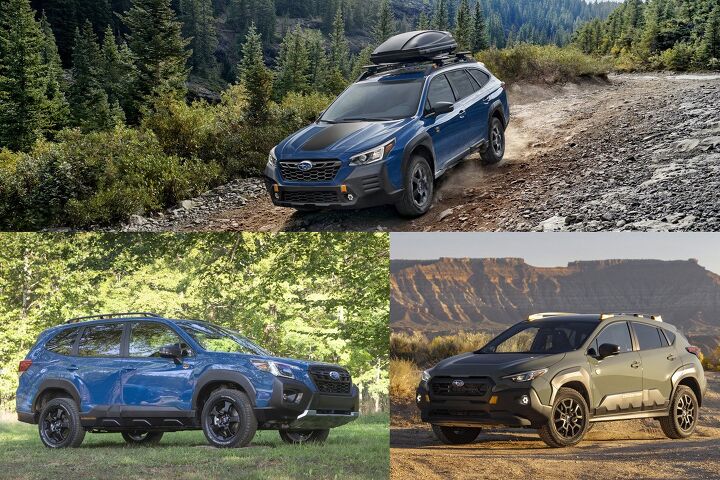





























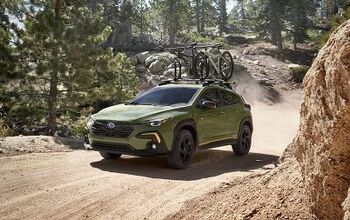

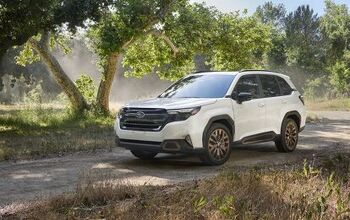
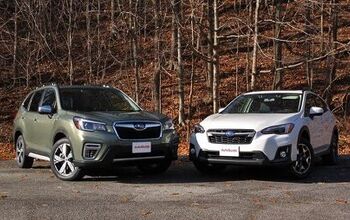
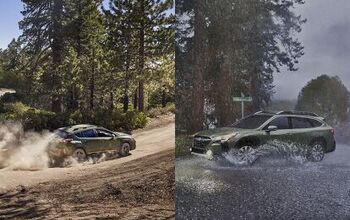










Comments
Join the conversation